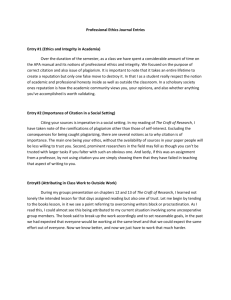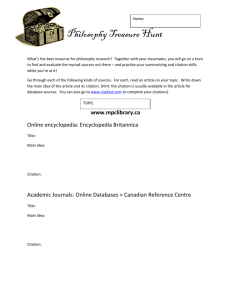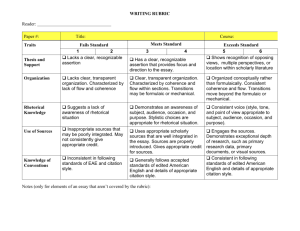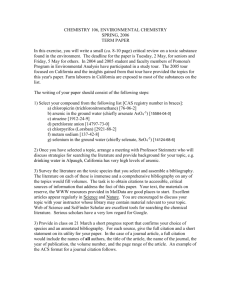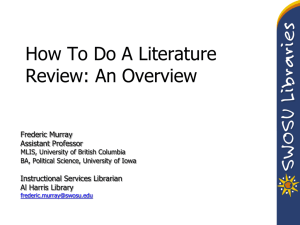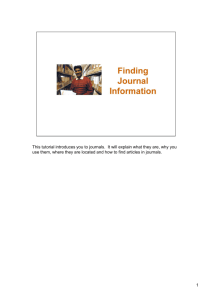TRIO ThinkQuest Success Using Rubric Driven Curriculum
advertisement
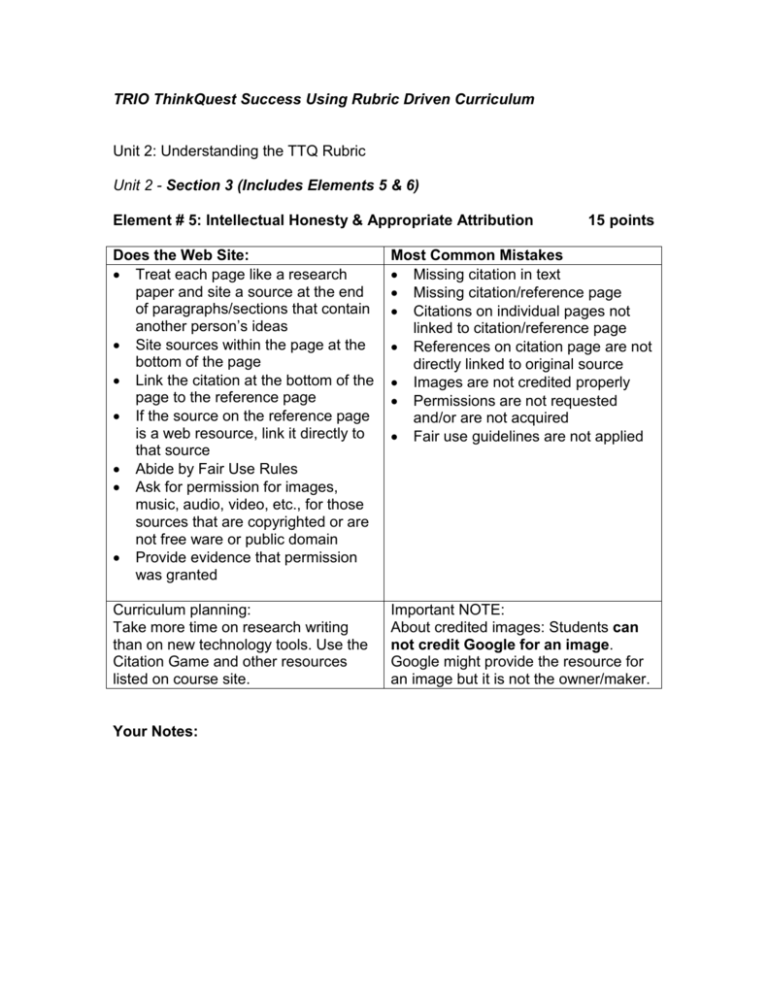
TRIO ThinkQuest Success Using Rubric Driven Curriculum Unit 2: Understanding the TTQ Rubric Unit 2 - Section 3 (Includes Elements 5 & 6) Element # 5: Intellectual Honesty & Appropriate Attribution 15 points Does the Web Site: Treat each page like a research paper and site a source at the end of paragraphs/sections that contain another person’s ideas Site sources within the page at the bottom of the page Link the citation at the bottom of the page to the reference page If the source on the reference page is a web resource, link it directly to that source Abide by Fair Use Rules Ask for permission for images, music, audio, video, etc., for those sources that are copyrighted or are not free ware or public domain Provide evidence that permission was granted Most Common Mistakes Missing citation in text Missing citation/reference page Citations on individual pages not linked to citation/reference page References on citation page are not directly linked to original source Images are not credited properly Permissions are not requested and/or are not acquired Fair use guidelines are not applied Curriculum planning: Take more time on research writing than on new technology tools. Use the Citation Game and other resources listed on course site. Important NOTE: About credited images: Students can not credit Google for an image. Google might provide the resource for an image but it is not the owner/maker. Your Notes: Element # 6: Internet Style of Learning 5 points This is the lowest scoring element on the rubric but it adds dimension to the learning product. Internet style of learning is simply taking advantage of using media for learning. The Web doesn’t limit the visitor to linear learning but allows the visitor to move from one point to another and back again through outside links, visuals, sounds, etc., if they choose. Internet style of learning is more interactive than scrolling through text. Your Notes:



